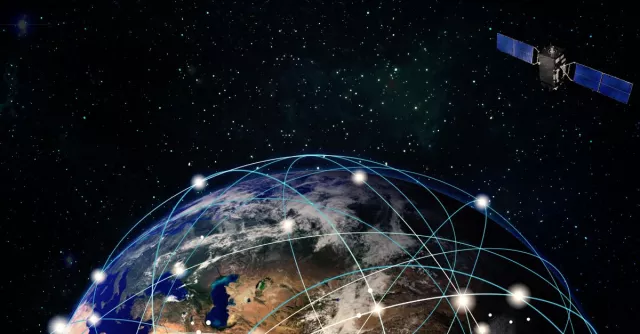Bridging the Connectivity Divide: LEO vs. GEO Satellite Technology

LEO vs. GEO Satellites
GEO satellites, stationed at an altitude of approximately 22,236 miles above the Earth's surface, have been the primary means of providing satellite internet for decades. These satellites remain fixed in one position relative to the Earth, making them ideal for services that require constant coverage, like television broadcasting. However, their distance from the Earth introduces significant latency, limiting their suitability for real-time applications and making them less effective in areas with challenging terrain.
On the other hand, LEO satellites orbit at much lower altitudes, typically around 1,200 miles or less above the Earth. Their proximity to our planet drastically reduces latency, making them an excellent choice for high-speed internet access. However, this proximity comes at a price: LEO satellites cannot provide continuous coverage over a specific area, as they orbit the Earth in a matter of minutes, necessitating a large constellation of satellites working together.
The LEO Satellite Revolution
LEO satellite technology has made significant strides in recent years, primarily driven by companies like SpaceX's Starlink, Amazon's Project Kuiper, and OneWeb. These ventures have been deploying thousands of LEO satellites into orbit, forming expansive constellations that work in concert to deliver internet services to even the most remote corners of the Earth.
One of the most remarkable advantages of LEO satellites is their agility. By constantly orbiting the Earth, they can adapt to changes in demand and traffic patterns, providing targeted coverage where it's needed most. This adaptability ensures a consistent and reliable internet connection for rural homes and businesses, even in areas with challenging terrain, like mountains or valleys.
Moreover, LEO satellites employ advanced technology, such as beamforming and phased-array antennas, to deliver faster and more stable connections. This technology allows for intelligent bandwidth allocation, reducing congestion during peak usage hours and ensuring that rural users enjoy the same level of service as their urban counterparts.
Closing the Connectivity Gap
The impact of LEO satellite technology on rural areas is nothing short of transformative. Previously underserved communities now have access to high-speed internet that can support online education, telemedicine, e-commerce, and more. This newfound connectivity has the potential to revitalize rural economies, attract new businesses, and improve residents' overall quality of life.
The battle between LEO and GEO satellite technology is reshaping how we connect to the internet. While GEO satellites have served us well, LEO satellites are leading the charge in closing the connectivity gap, particularly in rural areas. With their low latency, adaptability, and advanced technology, LEO satellites are not just changing the game; they're leveling the playing field, ensuring that everyone, regardless of their geographic location, can participate in the digital age. As LEO satellite constellations continue to expand and evolve, the future looks brighter than ever for rural homes and businesses seeking to stay connected.



